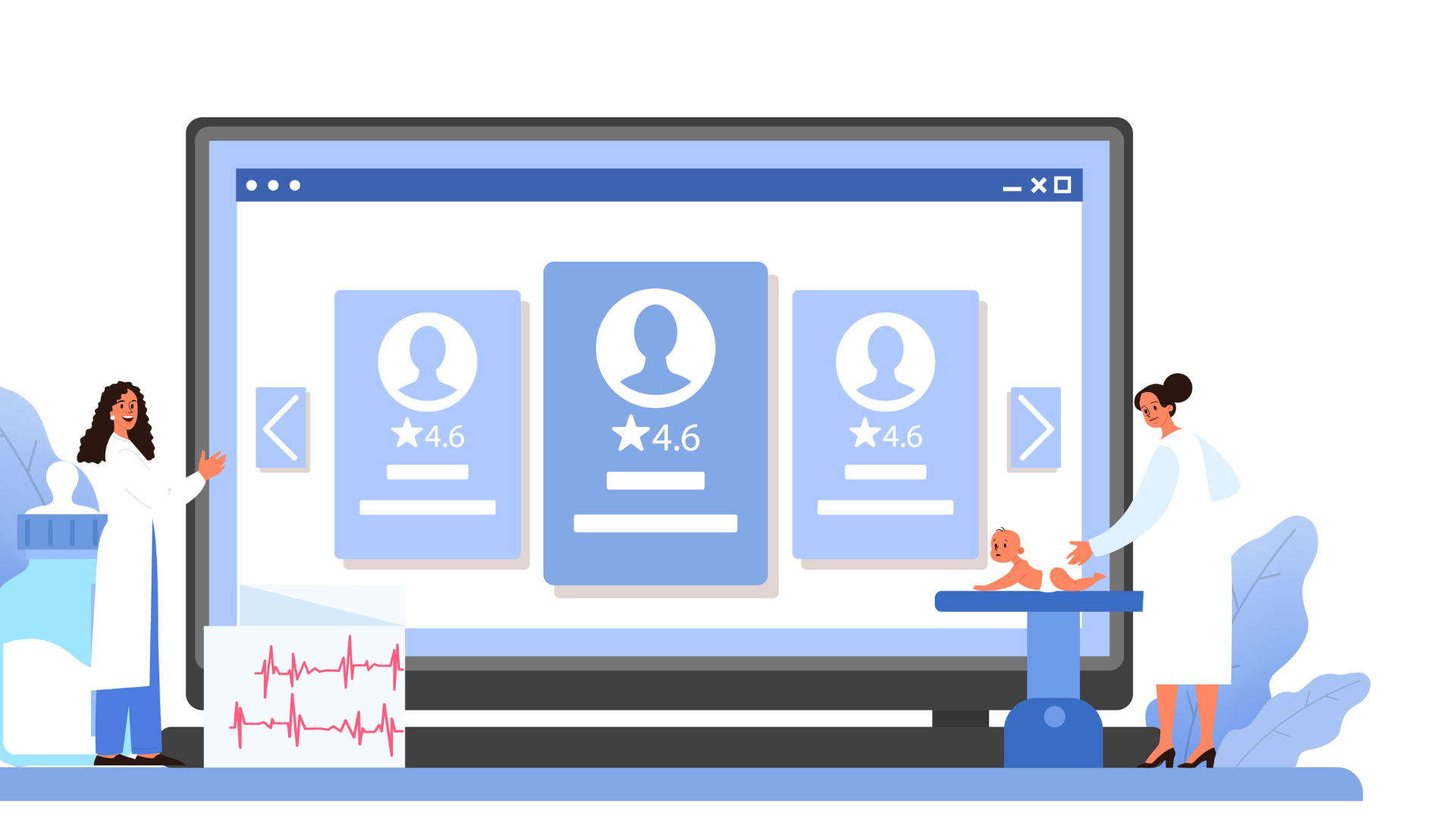Assume you’re a doctor with many patients to see every day. It can be challenging to remember who you’ll see, when their appointment is, and access their health records immediately. This makes it difficult for doctors and patients because everyone has to wait long, which can be highly confusing. Is there a way to simplify everything? Doctors would not have to constantly shuffle through paperwork, and patients could get in and out of the doctor’s office quickly without waiting for hours. Everyone would feel happy and less anxious. There’s something extraordinary called Patient Scheduling Software.
This program is like a super-helper for doctors. It maintains documentation of all appointments, monitors patient records, and sends reminders to ensure no one overlooks their visit. It provides everything that runs appropriately, allowing doctors to focus on making individuals feel better with less fuss.
The Role of Patient Scheduling Software in Healthcare
Consider patient scheduling software to be an intelligent planner used by doctors daily. This one-of-a-kind tool informs doctors and nurses about who they will see, when individuals will see them and what assistance they require. It’s like having a magical notebook that maintains everything organized and ensures that no one ends up or is forgotten.
Doctors utilizing this software can save time sifting through paperwork to get your medical information. All they need to understand is only a click away. This allows them to spend more time caring for you and less time on paperwork. Furthermore, this sophisticated planner ensures that everyone’s doctor visit is completed on time, resulting in fewer individuals having to sit and wait.
This software benefits both doctors and patients! It can give you reminders for your appointments with doctors. So you remember. It can also notify you if a modification occurs, such as if your time slot needs to be adjusted. This allows you and your family to manage your day better and avoid missing important doctor’s appointments.
Patient scheduling software is handy in hospitals and clinics. It makes everything operate more smoothly and quickly, making everyone happy—doctors, nurses, and patients alike!
Key Features of Patient Scheduling Software
Let’s look at the key characteristics of patient scheduling software and how each one significantly improves healthcare processes:
Patient Record Management
Patient scheduling software provides a comprehensive solution to keeping patient records improving how doctors and hospitals store, access, and update patient data. By centralizing records, the program reduces the likelihood of errors and guarantees that patient data is constantly up-to-date and easily searchable.
This capacity is especially critical in busy medical environments, where quick access to correct patient histories, medications, and medical notes can substantially impact the quality of care delivered. It also enables more fluid transfers between agencies or experts, providing that everyone involved in a patient’s care has a link to the most current information.
Appointment Management
One key task of patient scheduling software is efficiently arranging appointments. This feature enables the scheduling of patient sessions without the possibility of overbooking or scheduling problems. It allows medical practitioners to see which time slots are available, reducing the time spent making arrangements and increasing medical personnel’s work hours.
Patients will spend less time waiting for available appointments and receive faster service when they arrive. In addition, the system can easily manage postponements and cancellations, adjusting in real-time to maintain regular and efficient day-to-day operations.
Reports Management
Another significant benefit offered by patient scheduling software is effective report management. This feature allows for producing, preserving, and quickly retrieving various reports, including patient visits, billing, and clinical outcomes. These technologies can help healthcare providers assess progress over time, better understand patient outcomes, and make sound choices based on reliable data. Furthermore, swiftly generating and customizing reports simplifies compliance with healthcare legislation and standards, ensuring that all relevant paperwork is precise and immediately available for audits.
Simple and Recurring Appointments
The software’s ability to handle simple and recurring appointments provides another efficiency level. Patients requiring ongoing care, such as physical therapy, chronic illness management, or regular check-ups, must schedule recurring sessions. The system’s ability to arrange these repeat visits automatically conserves time while ensuring patients have ongoing treatment with no gaps. It also helps create a predictable timetable that improves the healthcare provider’s preparation and the patient’s routine.
Calling Feature – Ring Central Integration
Integrating with communication solutions such as Ring Central improves the functionality of patient scheduling software by allowing for direct communication across the platform. This interface enables healthcare providers to phone patients directly from the program for reminders about appointments, follow-ups, or urgent inquiries. It bridges the disconnect between administrative activities and direct patient involvement, making communication more fluid and personalized, which patients frequently appreciate.
Text and Image Signature
Implementing digital signatures for written and visual documents directly into patient scheduling software aids in compliance with legal and health requirements. This feature lets healthcare providers digitally sign off on reports and prescriptions, expediting document approval and reducing paperwork burden. Digital signatures protect papers from tampering and preserve their security, giving doctors and patients peace of mind.
Report Approval and PDF Generation
The ability to stamp out reports and produce PDFs within the system significantly simplifies the documentation process. This feature guarantees that all reports are swiftly evaluated and authorized before sharing or storing. The PDF-generating feature ensures that the papers are in a broadly available format, making them easy to distribute to other physicians, insurance firms, or patients.
App Alerts (Email and Notification)
The alert mechanism in patient scheduling software is essential for informing staff and patients. Automated notifications can advise employees of changes in time, such as suspensions or extensions, allowing them to adapt their plans accordingly. For patients, regular reminders via email or smartphone notifications can prevent no-shows and ensure that they arrive ready for their appointments, resulting in a smooth operational flow and increased patient satisfaction.
These elements make patient program scheduling an essential tool in current healthcare settings. It improves operational efficiency and the quality of patient care. This software improves the overall medical procedure for physicians and patients by automating regular processes and giving robust management features.
Advantages of Using Patient Scheduling Software
Adding patient scheduling software into a healthcare setting involves more than just improving technology; it is about drastically transforming day-to-day operations to improve efficiency and patient happiness. Let’s look at some of the key advantages these systems provide.
Streamlined Operations
One of the most significant benefits of employing patient scheduling software is that it streamlines healthcare institutions’ day-to-day operations. From appointment scheduling to healthcare follow-up, everything has been streamlined.
The result is less time spent on the phone or managing paperwork, freeing up medical personnel to do what they enjoy best: care for patients.
Reduced Wait Times
Nobody enjoys waiting, especially if they are feeling ill. Patient scheduling software reduces long wait times with proper appointment management. By optimizing the schedule, patients get treated more quickly, enhancing their overall visit and increasing the medical staff’s efficiency.
Enhanced Communication
Including features such as Ring Central for contacting and real-time notifications promotes smooth communication. These technologies help minimize misunderstandings and no-shows by keeping everyone informed and organized. Examples include reminding patients about forthcoming appointments or informing staff of schedule changes.
Better Data Management
Managing patient information and reports can be challenging. Patient scheduling software includes capabilities to handle these records, assuring accuracy and accessibility efficiently. This not only helps to ensure compliance with healthcare legislation, but it also serves as a firm platform for making astute medical judgments.
Improved Patient Care
Finally, these advantages contribute to the most crucial benefit: better patient care. When administrative duties are completed efficiently, healthcare providers may devote more attention to the patient in front of them. This results in improved diagnosis accuracy, more personalized care, and a more excellent overall quality of service.
Integrating patient scheduling software can significantly improve operational efficiency and the quality of treatment, making it an excellent choice in today’s fast-paced medical environment.
Conclusion
Healthcare practitioners continuously seek ways to increase efficiency and provide better treatment in today’s fast-paced workplace—patient scheduling software has proven to be a helpful tool in this endeavor. By automating booking appointments, handling patient records, and guaranteeing timely communication, this program saves time and increases patients’ overall experience.
As we’ve seen, the advantages extend beyond the front station to the patient’s home, making it an essential component of modern healthcare. Adopting these advances has the potential to transform clinics and hospitals, making them more efficient and effective.
If you work in healthcare, consider how installing patient scheduling software could improve your operations and the lives of your employees and patients




